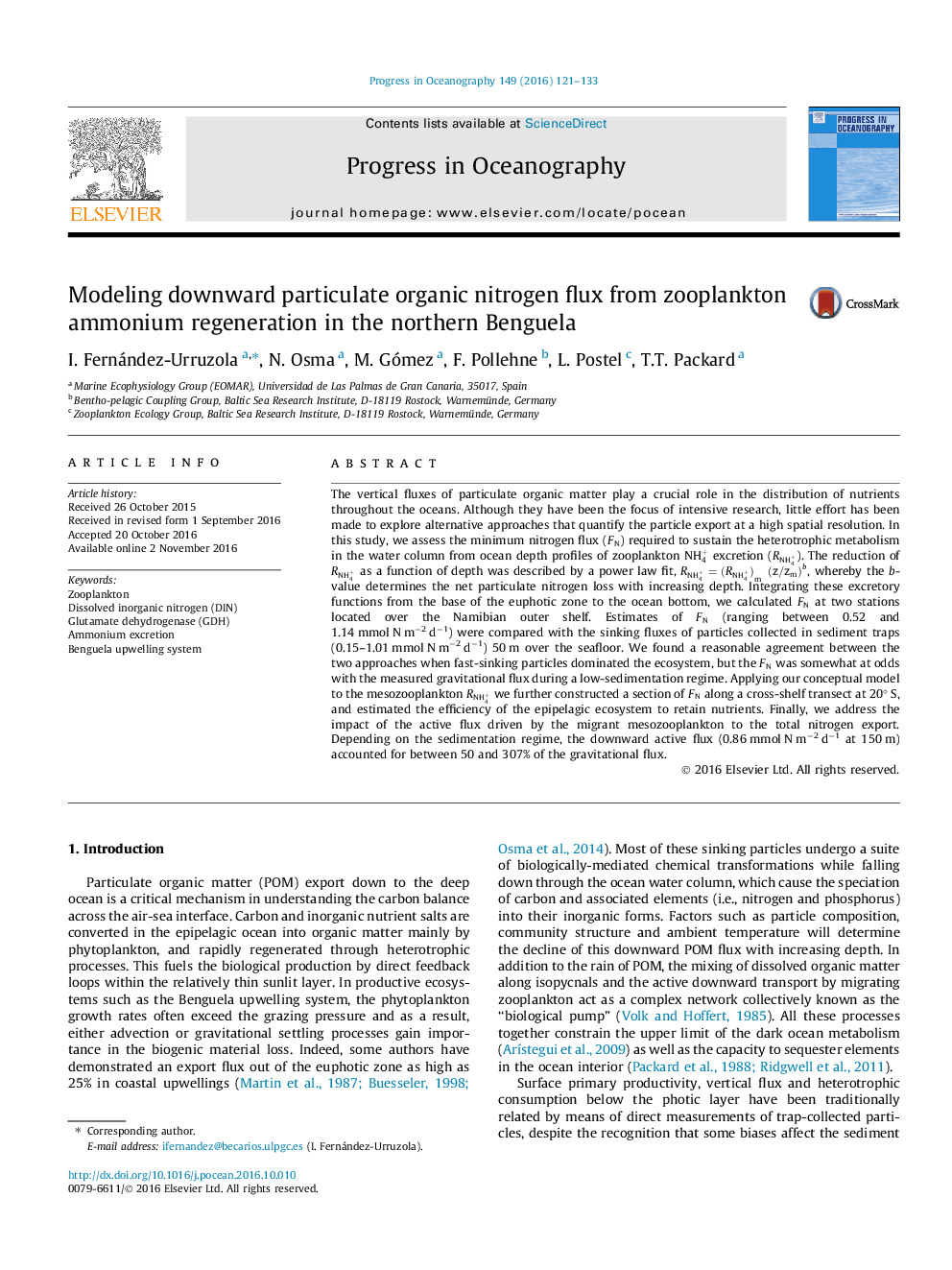| کد مقاله | کد نشریه | سال انتشار | مقاله انگلیسی | نسخه تمام متن |
|---|---|---|---|---|
| 8886796 | 1627909 | 2016 | 13 صفحه PDF | دانلود رایگان |
عنوان انگلیسی مقاله ISI
Modeling downward particulate organic nitrogen flux from zooplankton ammonium regeneration in the northern Benguela
ترجمه فارسی عنوان
مدل سازی شار نیتروژن آلی ذرات آلی از باززایی آمونیم زئوپلانکتون در شمال بنگولا
دانلود مقاله + سفارش ترجمه
دانلود مقاله ISI انگلیسی
رایگان برای ایرانیان
کلمات کلیدی
موضوعات مرتبط
مهندسی و علوم پایه
علوم زمین و سیارات
زمین شناسی
چکیده انگلیسی
The vertical fluxes of particulate organic matter play a crucial role in the distribution of nutrients throughout the oceans. Although they have been the focus of intensive research, little effort has been made to explore alternative approaches that quantify the particle export at a high spatial resolution. In this study, we assess the minimum nitrogen flux (FN) required to sustain the heterotrophic metabolism in the water column from ocean depth profiles of zooplankton NH4+ excretion (RNH4+). The reduction of RNH4+ as a function of depth was described by a power law fit, RNH4+=(RNH4+)m (z/zm)b, whereby the b-value determines the net particulate nitrogen loss with increasing depth. Integrating these excretory functions from the base of the euphotic zone to the ocean bottom, we calculated FN at two stations located over the Namibian outer shelf. Estimates of FN (ranging between 0.52 and 1.14 mmol N mâ2 dâ1) were compared with the sinking fluxes of particles collected in sediment traps (0.15-1.01 mmol N mâ2 dâ1) 50 m over the seafloor. We found a reasonable agreement between the two approaches when fast-sinking particles dominated the ecosystem, but the FN was somewhat at odds with the measured gravitational flux during a low-sedimentation regime. Applying our conceptual model to the mesozooplankton RNH4+ we further constructed a section of FN along a cross-shelf transect at 20° S, and estimated the efficiency of the epipelagic ecosystem to retain nutrients. Finally, we address the impact of the active flux driven by the migrant mesozooplankton to the total nitrogen export. Depending on the sedimentation regime, the downward active flux (0.86 mmol N mâ2 dâ1 at 150 m) accounted for between 50 and 307% of the gravitational flux.
ناشر
Database: Elsevier - ScienceDirect (ساینس دایرکت)
Journal: Progress in Oceanography - Volume 149, December 2016, Pages 121-133
Journal: Progress in Oceanography - Volume 149, December 2016, Pages 121-133
نویسندگان
I. Fernández-Urruzola, N. Osma, M. Gómez, F. Pollehne, L. Postel, T.T. Packard,
